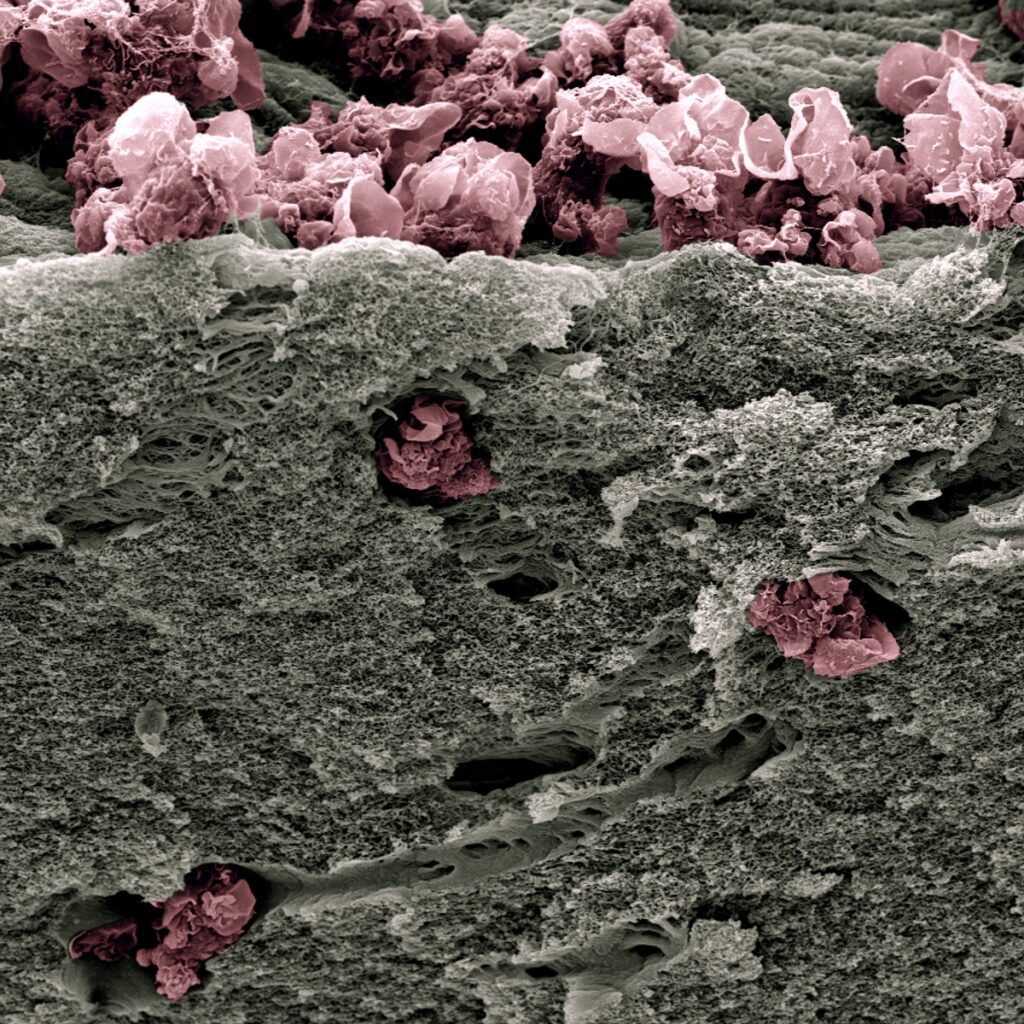Macrophage migration
The matrix architecture influences the migration of macrophages
We have obtained 3D matrices with variable architecture, composition and viscoelastic properties in order to mimic the tissue diversity and determine whether these parameters influence the migration of macrophages. Thanks to these matrices, we have first reported, in vitro, that human, blood monocyte-derived, macrophages use two modes of migration depending on the matrix architecture. In porous matrices, macrophages, as with all leukocytes, use the amoeboid migration mode characterized by a round cell shape, a high velocity and a dependency on the ROCK kinase [1]. In poorly porous matrices, macrophages use the mesenchymal mode, characterized by an elongated cell shape, a high directionality, a slow velocity, and a requirement of proteases to create their path. ROCK activation is not required in this process [1]. In contrast, ROCK inhibition by the cytoplasmic form of the cyclin-dependent kinase inhibitor p27kip1 favours the mesenchymal mode, and in vivo, macrophages depleted for p27kip1 fail to infiltrate lung tumors [2]. The ability of resident, M1-/M2-polarized and thioglycollate-elicited peritoneal macrophages to migrate through these various matrices has been examined. We observed that only M2-polarized and elicited macrophages can adopt the mesenchymal mode [3].

Macrophage migration in vivo
We then investigated whether macrophages also use the mesenchymal mode in vivo. We reasoned that mesenchymal migration that takes place in dense tissues should be observed in cancers as they are characterized by densification of the ECM. Fibrosarcoma were elicited in MacBlue mice (ECFP macrophages). Intravital microscopy revealed that tumor-associated macrophages (TAM) use the mesenchymal migration while macrophages at the tumor periphery or in inflamed derma use the amoeboid mode. In human breast tumor explants, macrophages also use the mesenchymal mode. We could decrease the number of TAMs by treating mice with inhibitors of matrix metalloproteases and consequently, tumor growth was diminished [4].
Podosomes are critical for mesenchymal migration and absent in cells using the amoeboid mode
Podosomes are F-actin rich cell adhesion structures that exert a proteolytic activity on the ECM and are constitutively formed in few cell types including macrophages [5]. Until recently, podosomes have only been characterized in cells cultured in 2D. We observed that when macrophages perform mesenchymal migration, they form cell protrusions at the tip of which podosome marker proteins accumulate and co-localize with F-actin and proteolytic degradation of the ECM. Thus, we called these cell structures ‘3D-podosomes [6]. They were not formed in macrophages using the amoeboid mode [6]; and therefore we hypothesized that 3D-podosomes could play a role in the protease-dependent mesenchymal mode. Actually, using several approaches, including siRNA and knock-out cells for podosome-regulating proteins, we showed that podosome alteration correlates with impaired mesenchymal migration but unaffected amoeboid migration [7, 8].

